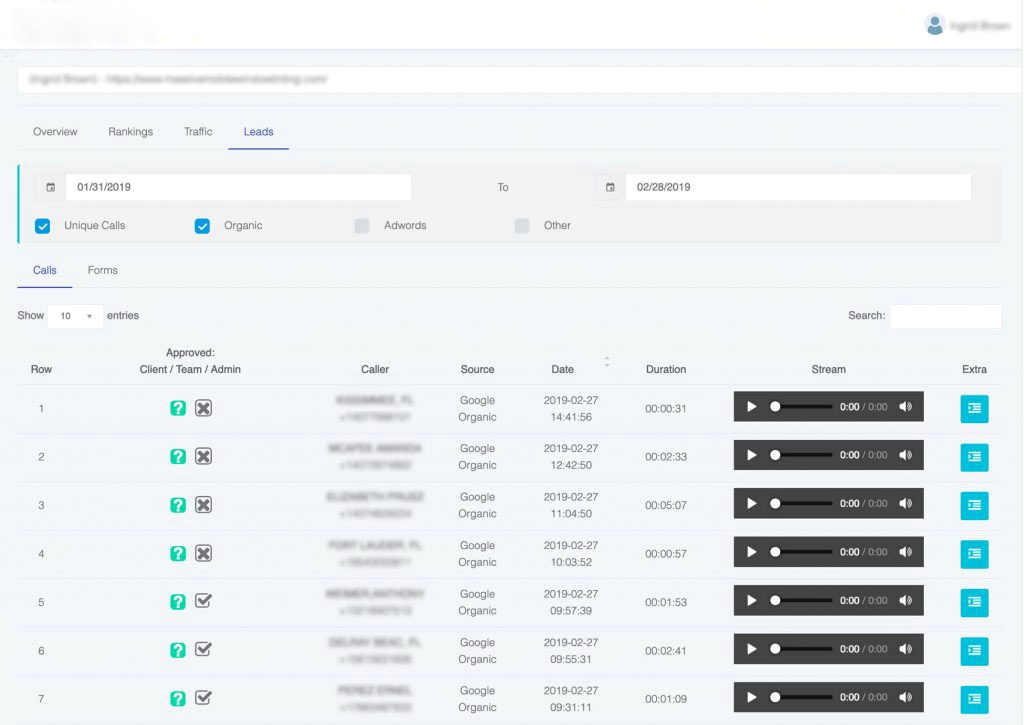When I began my SEO journey in 2003, the landscape looked vastly different. Back then, most small businesses had little experience with SEO as a marketing tool, and many were eager to jump on board, hoping to improve their rankings on Google. However, as SEO evolved, these businesses encountered numerous challenges—Google’s ever-changing algorithms, unreliable SEO agencies, and questionable tactics employed by some marketers. Worst of all, many business owners were left frustrated by companies that took their money but failed to deliver results.
This erosion of trust led to a widespread perception of SEO as unreliable. Business owners found themselves with two poor options: either give up on SEO altogether or sign up with an expensive, well-established firm. In 2018, our agency offered a third alternative that changed the game—Pay-Per-Lead SEO.

What is Pay-Per-Lead SEO?
We weren’t the first to introduce the pay-per-lead model, but we took it a step further by developing a system that tracks leads in real-time and ensures that our clients only pay for genuine new leads generated through SEO. This model shifts the risk away from the client and places it on the SEO agency to deliver actual, measurable results.
Our proprietary CRM also gives clients control by allowing them to determine which leads are legitimate and which are not. This transparency has made our approach a win-win for everyone involved. Here’s a look at how it has transformed our business and improved outcomes for our clients:
1. Increased Accountability and Motivation for Our Team
Under the pay-per-lead system, our team’s pay structure is directly tied to the number of leads we generate for our clients. We pay each optimization specialist a percentage of what we charge our clients, and since the amount clients pay can vary month to month, our team’s pay also fluctuates based on their performance.
This system incentivizes our team to work harder, improve their skills, and stay committed to achieving better results for clients. Every member of the team feels personally responsible for the success of each project, which fosters a culture of continuous learning and improvement.
2. Focus on Conversion Rate Optimization (CRO)
One of the unexpected benefits of adopting the pay-per-lead model was a newfound focus on improving conversion rates. Previously, our primary concern was ranking clients higher in Google search results. But after the switch, our focus shifted to ensuring that clients not only ranked well but also converted visitors into leads—because if leads weren’t coming in, we wouldn’t get paid.
Conversion rate optimization (CRO) became a core part of our strategy. For instance, if a website has 100 visitors and 20 of them become leads, the conversion rate is 20%. We quickly realized that some of our clients’ websites had low conversion rates, particularly on mobile devices, which was hurting their overall performance.
3. Optimizing Mobile Conversion Rates
As we delved deeper into CRO, we discovered a major issue: most of our clients’ mobile websites were poorly optimized. This was surprising, given the growing importance of mobile traffic. Common problems included:
- Slow loading times
- Lack of clear calls-to-action
- Overcrowded content
- Small fonts
- Oversized headers and images
Once we identified these issues, we worked on optimizing mobile versions of clients’ websites, leading to a significant increase in mobile conversion rates—up to 342% in some cases within just a few weeks. This improvement not only helped clients capture more leads but also enhanced the user experience across devices.
4. Coaching Clients on Lead Intakes
The pay-per-lead model also encouraged us to take a closer look at the way clients handled their incoming leads. By listening to client calls and analyzing how leads were managed, we identified several areas for improvement, such as:
- Not answering calls quickly enough
- Allowing the phone to ring too many times before voicemail picks up
- Having excessively long voicemail messages
- Using untrained staff to answer phones
By addressing these issues with our clients, we were able to help them improve their lead intake processes, which in turn boosted customer satisfaction and overall lead conversion.
5. Better SEO Performance Through CRO
As we focused on improving conversion rates, we noticed a positive correlation between CRO and SEO traffic. Sites that performed well in terms of conversions also saw an increase in traffic from Google. This reinforced the idea that Google values not just well-optimized websites, but those that provide a good user experience and effectively convert visitors into leads.
This discovery was backed by data. A look at analytics from one of our clients’ websites showed that as the conversion rate improved, the site’s overall traffic also increased. It makes sense—if visitors are finding what they need on a site and converting, Google is more likely to rank that site higher in search results.
Here’s a snapshot of the data before and after conversion rate optimization (CRO):
- Before CRO: Lower conversion rates, inconsistent traffic growth
- After CRO: Significantly improved conversion rates, steady traffic growth
This data underscores the importance of focusing on user experience and conversions alongside SEO. By optimizing for both, we not only improved our clients’ SEO performance but also ensured they were getting tangible results in the form of new leads.

The Future of SEO: Pay-Per-Lead
The pay-per-lead model has transformed the way we approach SEO and has brought a renewed sense of accountability, transparency, and performance to the industry. By aligning our success with that of our clients, we’ve been able to foster stronger partnerships and deliver measurable, meaningful results.
If you’re interested in exploring our pay-per-lead SEO program and how it can help your business grow, don’t hesitate to reach out. We’re here to help you achieve your business goals, one lead at a time.
If you’re interested in our pay-per-lead SEO program, give us a call us or just sign up on our site. We’ll be happy to help you achieve your business goals.


